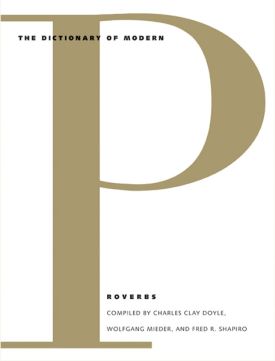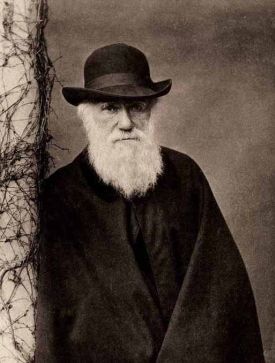The Morality of Normality
From The New CriterionThe Patron Saint of Normality
Here’s a straw in the wind to tell us which way the culture is trending. In its account of the appeals court decision overturning California’s Proposition 8 — which had during its brief existence affirmed as a matter of (state) constitutional law the traditional idea of marriage as a contract between a man and a woman — The New York Times quoted one Spencer Stier, aged 17, who was described as “the son of one of the [presumably homosexual] couples who initiated the case,” to illustrate its “emotional repercussions” in the view of the Times reporter. “As his mother looked on,” wrote Adam Nagourney, young Spencer uttered what someone at the paper considered the “Quotation of the Day” when he said that “with this ruling, in the eyes of the government, my family is finally normal.”
Now we have long known, at least since the days of Alfred Kinsey, that the idea of the “normal” confers social sanction and, indeed, social approval. “Everybody’s sin is nobody’s sin,” was Dr. Kinsey’s watchword in counting up all the different kinds of sexual behavior, hitherto considered sinful, that he found to be within the bounds of mathematical normality. Anything that was normal had on this view to be OK just because it was normal, and that remains the view of most of the media and the popular culture. But now, it seems, the social sanction conferred by normality is returning the favor. Since one supposes that Spencer Stier’s family is by no stretch of mathematical ingenuity anywhere near normal in the hitherto accepted sense of the word, he feels entitled to rely on the judges’ blessing to confer on that family a sort of mystical version of normality. Normality, it is not too much to say, is now considered a legal entitlement.
I think you probably have to understand this popular belief in order to understand lots of other things that are now coming to seem rather disturbingly normal — for instance, the decree by the Department of Health and Human Services that Catholic employers, including schools and hospitals, must provide their employees with health insurance which includes free contraceptives, including abortifacients, and sterilization procedures — this in spite of the Church’s long-standing teachings that these things are inherently sinful. By the time you read these words, the administration may have backed down from what looks to some like a politically foolish confrontation with the Catholic Church. To others, such as Andrew Sullivan it looks like a clever ploy by the President to lure the right wing into a confrontation it is sure to lose, since contraception is popular even with Catholics. At the time of writing the administration has offered a fig-leaf of a compromise which the Catholic bishops have rejected.
But assuming that this is not part of the master plan to undermine and discredit Catholic social teaching, which itself would be an interesting intervention of the government in religious matters, it remains a matter of interest, I think, why the President could have thought it right to have made such a decision in the first place. As Yuval Levin seems to have been the first to point out, it was among other things part of an attempt to remove the mediating institutions of our society from any ability to interfere with the government’s ever-expanding prerogatives.
In this sense, what is at issue in the controversy over the administration’s rule is not just the question of religious liberty but the question of non-governmental institutions in a free society. Does civil society consist of a set of institutions that help the government achieve its purposes as it defines them when their doing so might be more efficient or convenient than the state’s doing so itself, or does civil society consist of an assortment of efforts by citizens to band together in pursuit of mutual aims and goods as they understand them? Is it an extension of the state or of the community? In this arena, as in a great many others, the administration is clearly determined to see civil society as merely an extension of the state, and to clear out civil society—clearing out the mediating layers between the individual and the state—when it seems to stand in the way of achieving the president’s agenda.
This is very true and well said, but there must have been a more positive motivation behind it as well. In the interest of what, besides the government, are the mediating structures being cleared out? It has been said that, with the DHSS decree, the Obama administration “seems determined to establish secularism as a state religion,” but I don’t think this can be quite right. The religion of secularism is an oxymoron. The religion the President and those of like mind with him actually mean to establish is the worship of normality. The cult of normality is the religion of the left, and it lies behind not just the liberal commitment to “gay rights” — which can be summed up in the idea of a right to be normal — but in everything that modern liberals do. Historically, the worship of normality has its origins in the destruction of the old honor culture which, in one way of looking at it, worshiped the not-normal. Once the general honor culture had been pushed aside with the end of the Vietnam war, the way was open for the redefinition of those “rights” that had originally been established on this continent by English gentlemen, pledging their sacred honor to their preservation, as merely the right to be normal.
In explaining the death of the gentlemanly ideal in the country of its origin more than half a century ago, the late Simon Raven wrote that
Even the old Protestant ideal of individual conscience comes under fire. For while “individual rights” are now accorded almost hysterical attention, the sort of “right” referred to is that of being included in rather than that of opting out. To opt out, to take a different line, is to claim independence or even superiority; whereas what is required is that one should show respect for the “rights” of others by adapting oneself to their level.
This is also the impulse that lies behind multiculturalism. But the right to be normal turns out to be the compulsion to be normal, and it must eventually spell the death of all the other rights — including, as we now discover, the right to practice one’s religion freely. Free speech is similarly under threat from the speech codes that are periodically set up on college campuses and that are beginning to be enacted into law in countries like Canada and Norway. The expression of unpopular and minority opinions is by definition not normal and so must eventually be, to worshipers of the normal, another of those old-fashioned opt-out rights that has to go.
A necessary concomitant of these new ways of thinking is the idea that rights must come, like dairy products, with an expiration date. Supreme Court Justice Ruth Bader Ginsburg, speaking to an Egyptian interviewer who had asked her about prospective models for an Egyptian constitution, recently said that
I would not look to the U.S. Constitution, if I were drafting a Constitution in the year 2012. I might look at the Constitution of South Africa. . . That was a deliberate attempt to have a fundamental instrument of government that embraced basic human rights, had an independent judiciary. … It really is, I think, a great piece of work that was done. Much more recent than the U.S. Constitution.”
Echoing Justice Ginsburg, we find Adam Liptak in The New York Times, who reports that
“The U.S. Constitution appears to be losing its appeal as a model for constitutional drafters elsewhere,” according to a new study by David S. Law of Washington University in St. Louis and Mila Versteeg of the University of Virginia. The study, to be published in June in The New York University Law Review, bristles with data. Its authors coded and analyzed the provisions of 729 constitutions adopted by 188 countries from 1946 to 2006, and they considered 237 variables regarding various rights and ways to enforce them. . .
All this scholarly industry has been to show that constitutionalism around the world is no longer normally American. And no wonder, thinks Mr Liptak, since
the United States Constitution is terse and old, and it guarantees relatively few rights. The commitment of some members of the Supreme Court to interpreting the Constitution according to its original meaning in the 18th century may send the signal that it is of little current use to, say, a new African nation. And the Constitution’s waning influence may be part of a general decline in American power and prestige.
Look to your power and prestige and get with what’s normal, America! An odd injunction, it may seem, given how not-normal American power and prestige have been among the nations of the world these last 60 or 70 years. But the point remains. Our Constitution is now past its sell-by date. We, too, should get one of those modern, up-to-date rights-guaranteeing constitutions from South Africa or somewhere: the kind that confers on everyone the right to be normal. Or, failing that, we can simply do as Justice Ginsburg does and treat the Constitution we have as if it were a charter of normality. Being up-to-date is just the temporal version of being normal, and so it is understandably something that the Catholic Church had better get around to as well, as those who would outlaw its traditional teachings and practices seem to believe. Thus Rachel Maddow on NBC’s “Today” program in defense of the DHHS decision:
Listen, if there’s a bus driver opening and you’re Amish, nobody’s going to say you can’t apply for that because you’re Amish. But if you get the job and say, “Actually, I can’t drive this bus, I’m Amish,” people are going to say, “If it’s a bus driving gig, you’ve got to be able to drive. And if it’s health insurance, it includes contraception. It’s part of health care in the 21st century.
In a similar vein, Timothy Egan, whom we have had occasion to notice before in these pages, blogged for The New York Times that
the church position on birth control is tied, in its modern incarnation, to Pope Paul VI’s 1968 Humanae Vitae, in which he said that contraception was “intrinsically wrong.” All the evidence now suggests that on this issue, American Catholics believe it is the church’s position that is intrinsically wrong. American Catholics love the tradition, the sense of community and the cultural ties that connect them to distant struggles from Ireland to Africa. They are going to ignore church rulings on birth control and homosexuality, and continue to show up at Mass, to baptize their children, cheer at weddings and weep at funerals, no matter what the bishops tell them. Eventually, the church position will catch up to the beliefs and practices of 21st-century Catholics.
In short, the Church has to become — will inevitably become — normal or cease to exist, just like everybody else. Its teachings are also out of date. The rights of the normal to impose normality on the not-normal self-evidently supersede any supposed right of the not-normal to be exempted from normality. Such, at any rate, appears to be the assumption of many on the left today. Also blogging for The New York Times, for example, was the paper’s former legal correspondent Linda Greenhouse, now the Knight Distinguished Journalist in Residence and Joseph M. Goldstein Senior Fellow at the Yale Law School, who offered “to examine the conscience claim itself, directly, to see whether it holds up.” As someone who didn’t get in trouble for participating in an abortion rights march while she was supposed to be covering the abortion issue for the Times, Ms Greenhouse is not likely to be sympathetic to the “conscience claim,” but what can she mean by asking if it holds up? That it is not really conscience or not really a claim? It quickly becomes apparent that she simply doesn’t understand the concept of conscience, since she supposes that the conscientious principle can be invalidated by the fact that people quite often go against their consciences. It’s normal. That is, because 98 per cent of Catholic women (according to one survey) have at some time in their lives used contraceptives, she concludes that using contraceptives is not only normal but must therefore be these women’s real conscientious position, and not that enjoined on them by the teachings of their Church.
Normal
, we begin to see, trumps everything. If the church teaches that the normal is wrong, then it is (as Mr Egan helpfully points out) the church which must be wrong. “It’s important to be clear that the conscientious objection to the regulation comes from an institution rather than from those whose consciences it purports to represent,” agrees Ms Greenhouse. But the Church doesn’t purport to “represent” anybody’s conscience — as if it were taking a poll in order that its teachings should be in accord only with what people already think and do and somehow made a mistake. You can just imagine Ms Greenhouse on this: Dear Pope, In case you didn’t know, lots of Catholics are using birth control. I’m sure you will want to adjust the Church’s teachings on this subject accordingly. Yours truly, Linda. She cannot really believe this. Such stupidity is not in nature. It must be learned, and I think it has been learned in the temple of normality, where the ideas of right and common practice can no longer be distinguished one from another.
Part of the reason for this blindness must also lie in the media culture which disdains hypocrisy above all things and is therefore incapable of recognizing the necessity of hypocrisy for anyone whose reach exceeds his grasp. That used to be just about everyone, but now it is thought, and not only in the media-dominated culture, to be at best bad form and at worst scandalous wickedness for one to profess any moral beliefs that one might fail to live up to. Much better for everybody to profess no moral beliefs at all — except a belief in the evil of hypocrisy. The media, it’s true, could not do without such a belief. They have made hard-hitting if selective exposure of the gap between principle and practice — and publicizing to within an inch of its life the subsequent scandal — their whole raison d’etre. But that would not have been possible for them without a widespread public perception that hypocrisy is the chief and perhaps the only sin against the doctrine of normality, which is also the real faith of many nominal Christians.
I suppose that we worship the normal because, having rejected God and traditional morality as well as the Church, it is all we have left as a guide in an uncertain and bewildering world from which the sea of faith has continued its melancholy long withdrawing roar for well over a century now. And if the things that we believe are not normal in the mathematical sense — as Proposition 8 was passed by a majority of California’s voters — there must be a moral normality that can be claimed by anyone and that can be said to supersede the numerical kind. That’s why the headline in Politico, like Andrew Sullivan, typically missed the point about what it called the new “Culture Wars Over Contraception.” These “wars” — tired journalistic cliché that they were — are no longer over contraception but over religious liberty itself.
At least the Politico article, by Scott Wong, acknowledged that some might see it that way. In noting the divisions among Democrats over the matter, he wrote that “Republicans were practically gleeful at the Democratic divide, convinced they’ve found a winning issue for their party in 2012. They’re branding it Obama’s war on religious liberty.” So to Mr Wong the point of contention is not just the rights of conscience but whether the state’s overruling of a church’s teaching even rises to the level of a right of conscience. Perhaps it would be better to see the issue, as Ms Greenhouse did, merely as a matter of what is normal. At any rate, other pundits besides Mr Sullivan who looked at the thinking within the Obama administration that led to the decision seemed to think the President was right to have bet that people wouldn’t understand the constitutional principle involved and would instead see the whole business as nothing more than a typically anachronistic attempt by Republicans and other obscurantists to ban contraception.
It’s normal, now, to think in terms of what’s normal, at least for normal people, and not in terms of abstract principles such as those outdated constitutional rights the right-wing extremists are always talking about. Normal people can be relied on to assume that the GOP, who were united against the ruling, were simply showing their true reactionary colors, not to mention their medieval thinking, by coming out against contraception. If that is, indeed, the answer to Fred Barnes’s question of the President, “What was he thinking?” and if, further, Mr Obama doesn’t eventually back down from a confrontation with what must have seemed only yesterday a crucial Democratic voting bloc, it will be very interesting to find out if he was right in thinking that the normals are no longer in any mood to feel concern about the rights of the not-normals — to say nothing of providing a better gauge than any we have yet been vouchsafed of our progress on the road to total normality.
Discover more from James Bowman
Subscribe to get the latest posts to your email.







